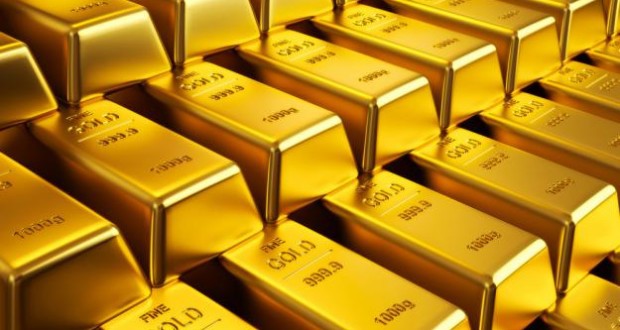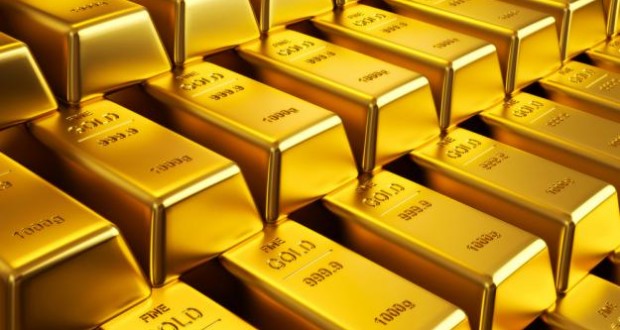
Of late, the trading pattern of gold prices has become interesting. The gold prices have been driven by strengthening Asian demand for gold and pulled back by the uncertainty of economic and political scenarios in the European nations. Gold rallied to its peak at $1,177.46 an ounce on 19 March and the dollar slipped after Federal Reserve’s signal of cautious US economic outlook and slower than expected hikes in interest rates. The dollar gained strength and the gold prices slumped which signalled strong foothold of American labour market, despite slowdown in economic growth. The strengthening of dollar will be a vital negative driver for the safe haven metal in near future.
Gold dropped to its 4 month lows in the earlier part of 3rd week of March mainly due to steering expectation for higher interest rates which could result in weakening of demand for non-interest bearing safe haven. However, the Fed’s announcement of much lower than expected interest rates lifted the metal price.
The world gold market witnessed stabilization in 2014 as it dragged back from its extremes in 2013. The annual demand for gold fell 4% to 3924 tons in 2014 as compared to previous year. However, the fourth quarter was marked by strong growth in demand mainly driven by jewellery and central bank purchase.
Global Gold industry is likely to witness revival in gold prices driven by rising gold demand in Asia. Moreover, lower valuations and increasing pressure for restructuring over the African gold producers is expected to stimulate a wave of acquisitions across the sector thereby attracting many potential buyers. Chinese central banks developed a comprehensive plan on granting extra licenses for gold metal import and export, however preserving the right to impose trade restrictions whenever necessary. This would open up doors for the second largest bullion market in the world, thereby boosting demand for gold.
Moreover the gold market experienced a striking shift from West to East in physical gold demand which is now followed by an infrastructural development in gold industry particularly in Asia. Besides new products, new trading platforms were also established like the Shanghai Gold Exchange International Board and the contract of kilobars in Singapore and HongKong, thereby making gold easily accessible to large number of buyers in the East.
In other sectoral news, almost six institutions will begin setting gold prices by an electronic system that will be run by US based ICE benchmark, thereby bringing a comprehensive change to the old London Bullion benchmarks.
According to World Gold Council, the central bank purchases of gold stepped up 17% in 2014 as compared to previous year. The amount paid by Global central banks for the safe haven metal totalled to $19.4 billion. Russia was the largest buyer of gold with its purchases accounting for about 36% of overall purchase by world’s central banks. Remarkably, Kazakhstan that was Russia’s major partner in the Eurasian Economic Area (EAEA) stood to be the second biggest central bank buyer previous year. In the past gold has proved to be the most desirable metal. Eventhough, the safe haven metal appears to have lost its lustre as investment alternative, there are still many reasons to remain positive about the gold industry.
Gold dropped to its 4 month lows in the earlier part of 3rd week of March mainly due to steering expectation for higher interest rates which could result in weakening of demand for non-interest bearing safe haven. However, the Fed’s announcement of much lower than expected interest rates lifted the metal price.
The world gold market witnessed stabilization in 2014 as it dragged back from its extremes in 2013. The annual demand for gold fell 4% to 3924 tons in 2014 as compared to previous year. However, the fourth quarter was marked by strong growth in demand mainly driven by jewellery and central bank purchase.
Global Gold industry is likely to witness revival in gold prices driven by rising gold demand in Asia. Moreover, lower valuations and increasing pressure for restructuring over the African gold producers is expected to stimulate a wave of acquisitions across the sector thereby attracting many potential buyers. Chinese central banks developed a comprehensive plan on granting extra licenses for gold metal import and export, however preserving the right to impose trade restrictions whenever necessary. This would open up doors for the second largest bullion market in the world, thereby boosting demand for gold.
Moreover the gold market experienced a striking shift from West to East in physical gold demand which is now followed by an infrastructural development in gold industry particularly in Asia. Besides new products, new trading platforms were also established like the Shanghai Gold Exchange International Board and the contract of kilobars in Singapore and HongKong, thereby making gold easily accessible to large number of buyers in the East.
In other sectoral news, almost six institutions will begin setting gold prices by an electronic system that will be run by US based ICE benchmark, thereby bringing a comprehensive change to the old London Bullion benchmarks.
According to World Gold Council, the central bank purchases of gold stepped up 17% in 2014 as compared to previous year. The amount paid by Global central banks for the safe haven metal totalled to $19.4 billion. Russia was the largest buyer of gold with its purchases accounting for about 36% of overall purchase by world’s central banks. Remarkably, Kazakhstan that was Russia’s major partner in the Eurasian Economic Area (EAEA) stood to be the second biggest central bank buyer previous year. In the past gold has proved to be the most desirable metal. Eventhough, the safe haven metal appears to have lost its lustre as investment alternative, there are still many reasons to remain positive about the gold industry.


















